Looking for the best chili recipes with peppers? This guide covers everything you need to know about pepper varieties, heat levels, and how to create delicious chili with the perfect balance of flavor and spice. Whether you're a beginner or an experienced cook, you'll find practical tips and recipes to suit your taste.
Table of Contents
- What Makes a Chili Recipe with Peppers So Special?
- Understanding Pepper Heat Levels (From Gentle to Inferno)
- The Ultimate Chili Recipe: Your Customizable Base
- Pro Tips for Making the Best Chili at Home
- Buying Guide: Must-Have Tools and Ingredients
- Frequently Asked Questions About Chili Recipes with Peppers
- Conclusion: Turn Up the Heat on Your Kitchen Game
What Makes a Chili Recipe with Peppers So Special?
At its core, a good chili recipe is all about balance. It's not just about turning up the heat; it's about layering flavors so that each bite tells a story. Peppers are the stars here — they bring color, depth, and, of course, fire. But what many don't realize is that each pepper variety has a unique profile, from fruity undertones to smoky notes that elevate your dish beyond mere spiciness.
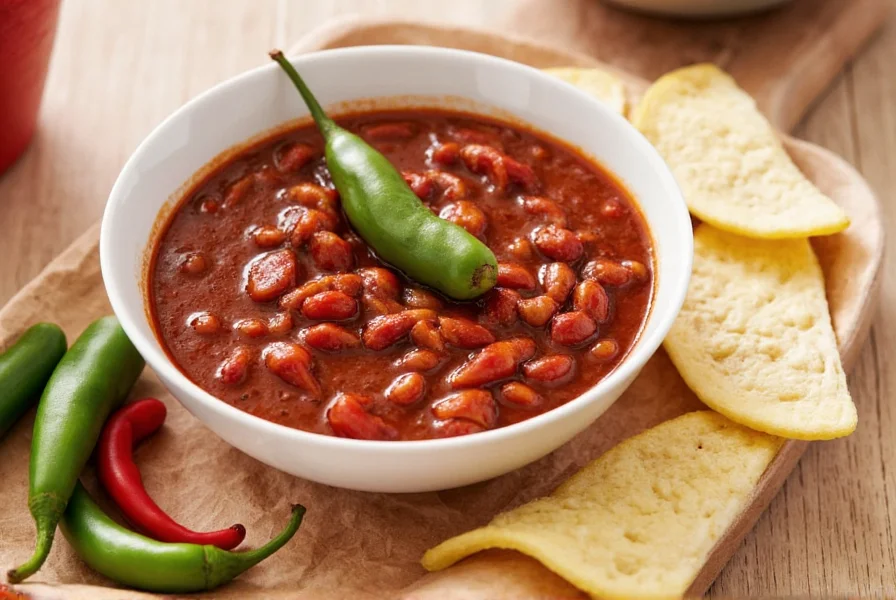
Why You Should Care About the Peppers You Use
Using the right peppers can mean the difference between a forgettable meal and one that lingers in memory. Think of peppers like wine — the terroir, variety, and processing method all affect flavor. For example, sun-dried ancho chilies have a rich, raisin-like sweetness, while fresh jalapeños offer a bright, grassy zing.
Understanding Pepper Heat Levels (From Gentle to Inferno)
Not all peppers are created equal — especially when it comes to heat. Understanding the Scoville scale can help you tailor your chili to suit your audience, whether you're cooking for kids or daring friends who love extreme spice.
| Pepper Type | Scoville Units | Flavor Profile | Best Used In |
|---|---|---|---|
| Shishito | 500–2,000 | Mild, slightly sweet | Light stir-fries, snacks |
| Jalapeño | 2,500–8,000 | Crisp, earthy | Salsas, soups |
| Guajillo | 2,500–5,000 | Berries, tea-like finish | Moist rubs, sauces |
| Hatch Green | Varies (mild to hot) | Smoky, tangy | Southwestern chili |
| Ancho | 1,000–2,000 | Deep, chocolatey | Traditional Mexican chili |
| Ghost Pepper | Over 1,000,000 | Intense, short-lived burn | Extreme spice challenges |
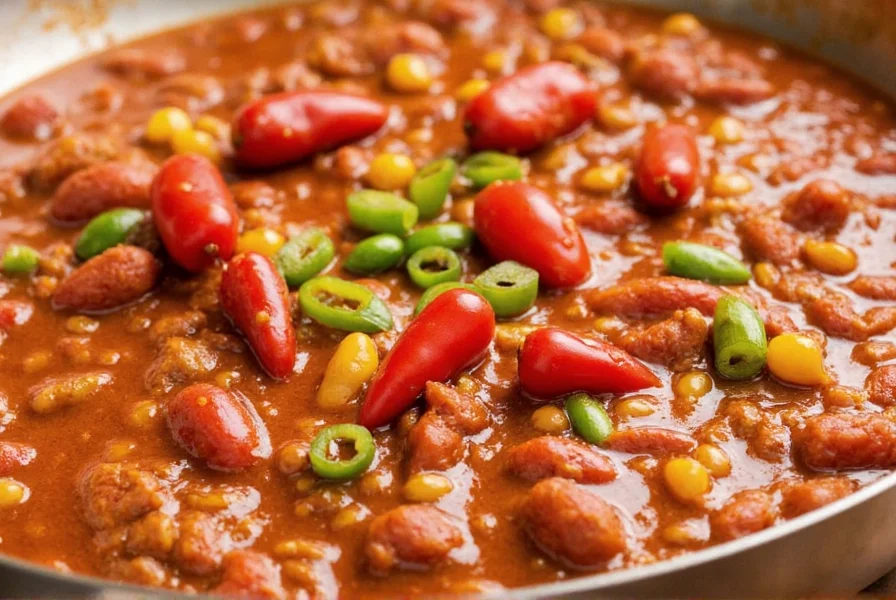
The Secret to Using Hot Peppers: Balance Is Key
Don't be fooled by the numbers — a high Scoville rating doesn't always mean better. The best chili recipes use peppers in combination. Try mixing a mild poblano with a punchy serrano for complexity. Remember, the goal is to enhance flavor, not shock taste buds.
The Ultimate Chili Recipe: Your Customizable Base
This simple yet powerful base will give you endless options. Think of it as your canvas — add meat, beans, tomatoes, or even tropical fruits to create your signature chili!
Basic Chili Recipe with Peppers
- 2 tablespoons olive oil
- 1 medium onion, diced
- 2 cloves garlic, minced
- 2 bell peppers (any color), chopped
- 2 jalapeños, seeded and diced
- 1 tbsp chili powder (adjust to taste)
- 1 tsp smoked paprika
- 1 cup crushed tomatoes
- ½ cup water or broth
- Salt and pepper to taste
- Optional: ground beef, kidney beans, cumin, lime juice
- In a large pot, heat olive oil over medium heat.
- Add onions and sauté until translucent, about 5 minutes.
- Add garlic and cook another minute until fragrant.
- Add all peppers and sauté until softened, 7–10 minutes.
- Stir in spices and cook for 1–2 more minutes to toast them.
- Add tomatoes, water/broth, and optional protein or beans.
- Simmer for 30 minutes to an hour, stirring occasionally.
- Season with salt, pepper, and a splash of lime juice if desired.
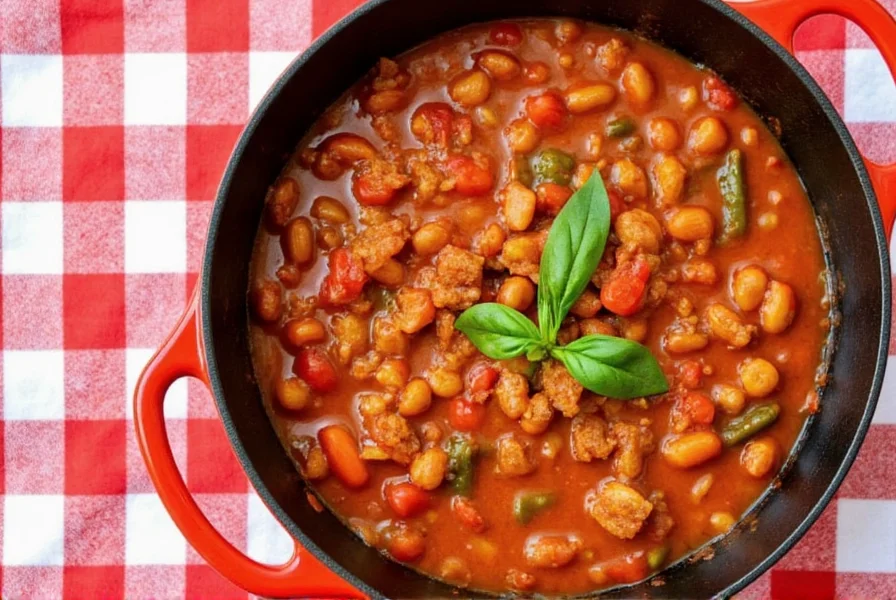
Variations & Twists
- Tex-Mex Style: Add ground beef, kidney beans, and a dash of cumin.
- Caribbean Kick: Swap bell peppers with scotch bonnet and add pineapple chunks.
- Vegan Vibes: Use jackfruit or mushrooms instead of meat and skip dairy toppings.
- Asian Fusion: Substitute soy sauce for some of the liquid and add sesame oil and ginger.
Pro Tips for Making the Best Chili at Home
Want your chili to stand out? Here are some expert-level tricks to turn your home-cooked version into a crowd-pleaser:
1. Roast Your Peppers First
Roasting adds a deep, smoky dimension that elevates the entire dish. Simply char peppers over a flame or under the broiler, then seal them in a bag to steam. Once peeled and chopped, their flavor becomes more intense and complex.
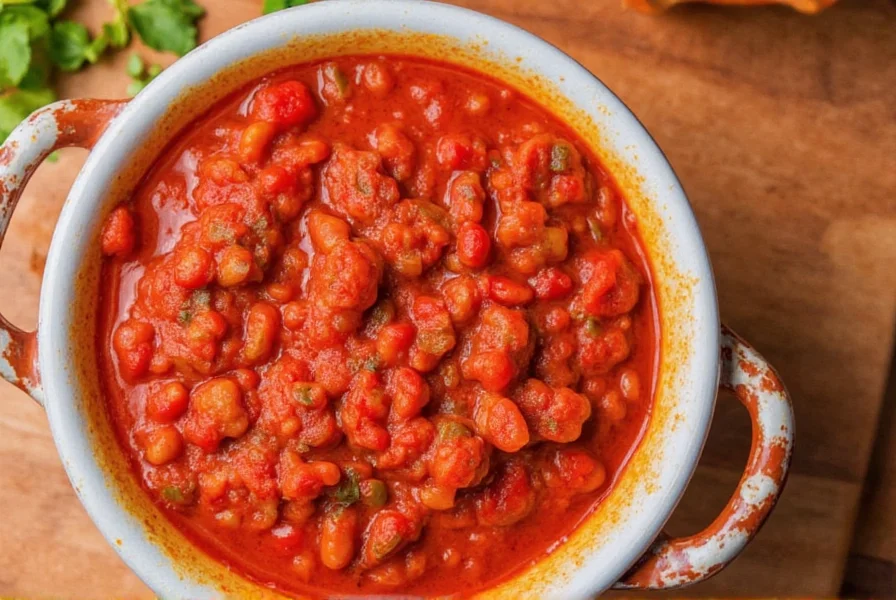
2. Let It Rest Overnight
Like many stews, chili tastes even better the next day. The flavors have time to meld together, and the heat mellow slightly — perfect for achieving that restaurant-quality depth.
3. Don't Skimp on the Acid
A dash of vinegar or citrus at the end can brighten the whole dish. Try lime zest, apple cider vinegar, or even a few drops of lemon extract for a surprising but delightful twist.
4. Top It Right
- Fresh cilantro
- Sour cream or Greek yogurt
- Crumbled queso fresco or feta
- Chopped green onions
- Hot sauce (optional, obviously)
Buying Guide: Must-Have Tools and Ingredients
If you're serious about making killer chili at home, investing in quality tools and ingredients can make all the difference. Here's our curated list of essentials for every chili lover:
| Product | Features | Advantages | Use Cases | Target Audience |
|---|---|---|---|---|
| Cast Iron Dutch Oven | Durable, retains heat well | Even cooking, ideal for slow simmering | Batch cooking, outdoor grilling | Home cooks, campers |
| Cast Iron Skillet | Premium construction, oven-safe | Rapid heating, excellent browning | Roasting vegetables, searing meat | Chefs, grill enthusiasts |
| Spice Grinder | Adjustable settings, easy clean-up | Fresher flavor than pre-ground spices | Grinding dried chilies, seeds | Foodies, spice lovers |
| Heavy-Duty Cutting Board | Antimicrobial surface, non-slip bottom | Safe prep space, easy storage | Chopping veggies and meat | All skill levels |
| Dried Chile Mix Pack | Includes guajillo, ancho, pasilla | Perfect for authentic Mexican-style chili | Homemade mole, chili sauces | Beginners, pros |
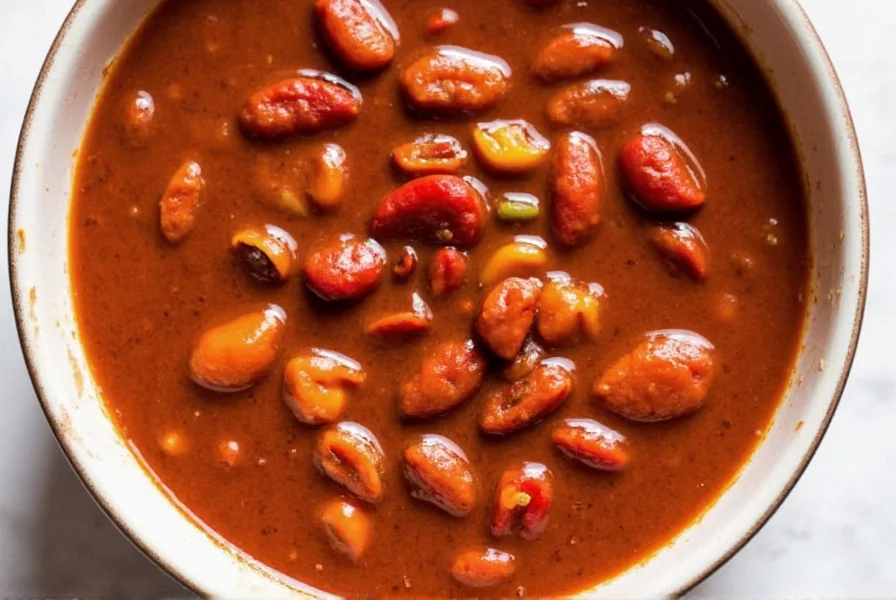
Choosing the Right Dried Chilies
When buying dried peppers, look for vibrant colors, intact skins, and a strong aroma. Avoid any that are cracked or overly brittle. Store them in an airtight container in a cool, dark place for up to a year.
Frequently Asked Questions About Chili Recipes with Peppers
How do I reduce the heat in my chili if it's too spicy?
If your chili becomes too spicy, there are several ways to tame the heat. Add dairy products like sour cream, yogurt, or cheese, which contain casein that breaks down capsaicin (the compound that makes peppers hot). You can also add sweetness with a touch of honey or maple syrup, or increase the volume by adding more tomatoes, beans, or broth to dilute the spiciness. Acidic ingredients like lime juice can also help balance intense heat.
What's the best type of pepper for beginners making chili?
For beginners, bell peppers and poblano peppers are excellent starting points as they provide flavor without overwhelming heat. Bell peppers come in various colors (red, yellow, green) and offer sweetness and texture. Poblanos have mild heat (1,000-2,000 Scoville units) with rich, earthy flavor. You can also try using just the recommended amount of jalapeños in the recipe (with seeds removed for less heat) to gradually build your tolerance while adding authentic chili flavor.
Can I use dried peppers instead of fresh in chili?
Absolutely! Dried peppers are actually traditional in many chili recipes and offer concentrated, complex flavors. Ancho (dried poblano), guajillo, and pasilla peppers are common in authentic chili recipes. To use dried peppers, toast them lightly in a dry skillet for 30-60 seconds per side, then soak in hot water for 15-20 minutes until soft. Blend with some of the soaking liquid to create a smooth sauce that you can add to your chili base. Dried peppers often provide deeper, smokier flavors than their fresh counterparts.
How long does homemade chili with peppers last in the refrigerator?
Properly stored in an airtight container, homemade chili with peppers will last 3-4 days in the refrigerator. The flavors often improve after the first day as ingredients continue to meld. For longer storage, chili freezes exceptionally well for 4-6 months. When reheating, make sure the chili reaches an internal temperature of 165°F (74°C). If you notice any off smells, mold, or significant separation that doesn't reincorporate when stirred, it's time to discard the chili.
What are some non-spicy pepper options for chili?
If you want pepper flavor without the heat, consider these options: bell peppers (all colors), pimento peppers, cubanelle peppers, or sweet banana peppers. These provide the distinctive pepper flavor and texture without significant heat. You can also use roasted red peppers from a jar for convenience. For a subtle pepper flavor with minimal heat, try sweet paprika or pimentón dulce (sweet smoked paprika), which adds depth without spiciness.
Can I make this chili recipe in a slow cooker?
Yes! Slow cookers work wonderfully for chili. First, sauté your onions, garlic, and peppers in a pan as directed in the recipe to develop flavor (this step is important as slow cookers don't caramelize well). Then transfer everything to your slow cooker with the remaining ingredients. Cook on low for 6-8 hours or on high for 3-4 hours. The slow cooking process helps flavors meld beautifully. Just be careful not to overcook beans, which can become mushy - add them during the last 1-2 hours if using dried beans, or during the last hour if using canned.
How do I store leftover chili with peppers for future meals?
For best results, cool the chili quickly by placing the pot in an ice bath, stirring occasionally. Once cooled to room temperature (within 2 hours of cooking), portion into airtight containers. For refrigerator storage (3-4 days), use shallow containers no more than 2 inches deep. For freezer storage (4-6 months), leave 1 inch of headspace in containers to allow for expansion. Freezing in portion-sized containers or ice cube trays (then transferring to freezer bags) makes it easy to thaw just what you need. Label with date and contents. When reheating from frozen, thaw overnight in the refrigerator or use the defrost setting on your microwave.
Conclusion: Turn Up the Heat on Your Kitchen Game
Now that you've got the lowdown on crafting the perfect chili recipe with peppers, it's time to get creative! Experiment with different peppers, play with textures and temperatures, and don't be afraid to mix cultural influences for exciting new twists. Whether you're feeding a hungry family or hosting a spicy-themed dinner party, these techniques and tips will ensure your chili steals the show.
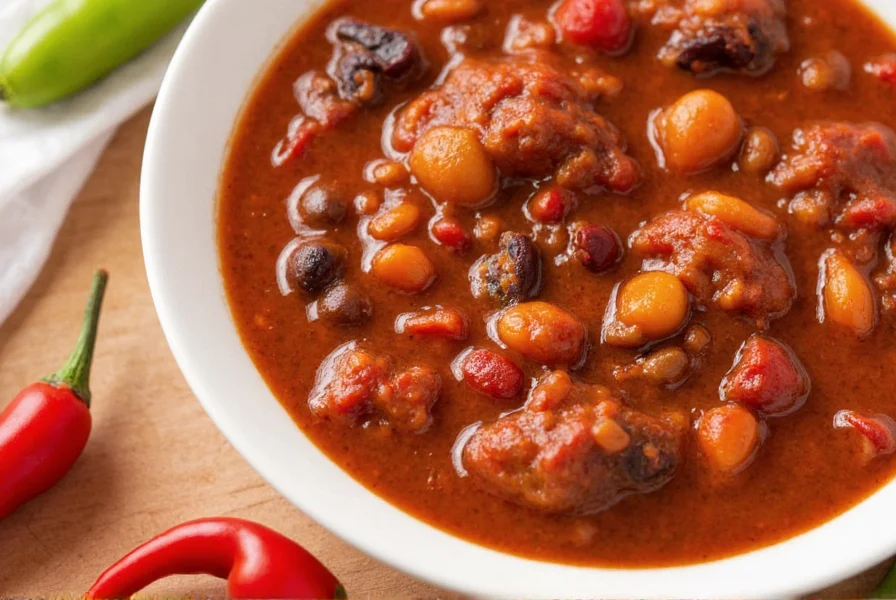
So go ahead — crank up the heat, embrace the burn, and let your kitchen sizzle with delicious possibilities!

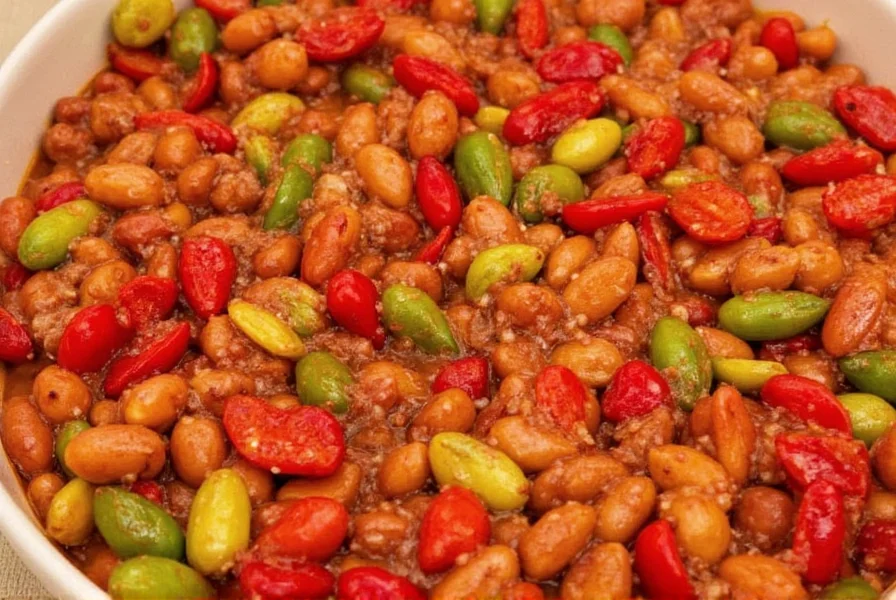









 浙公网安备
33010002000092号
浙公网安备
33010002000092号 浙B2-20120091-4
浙B2-20120091-4